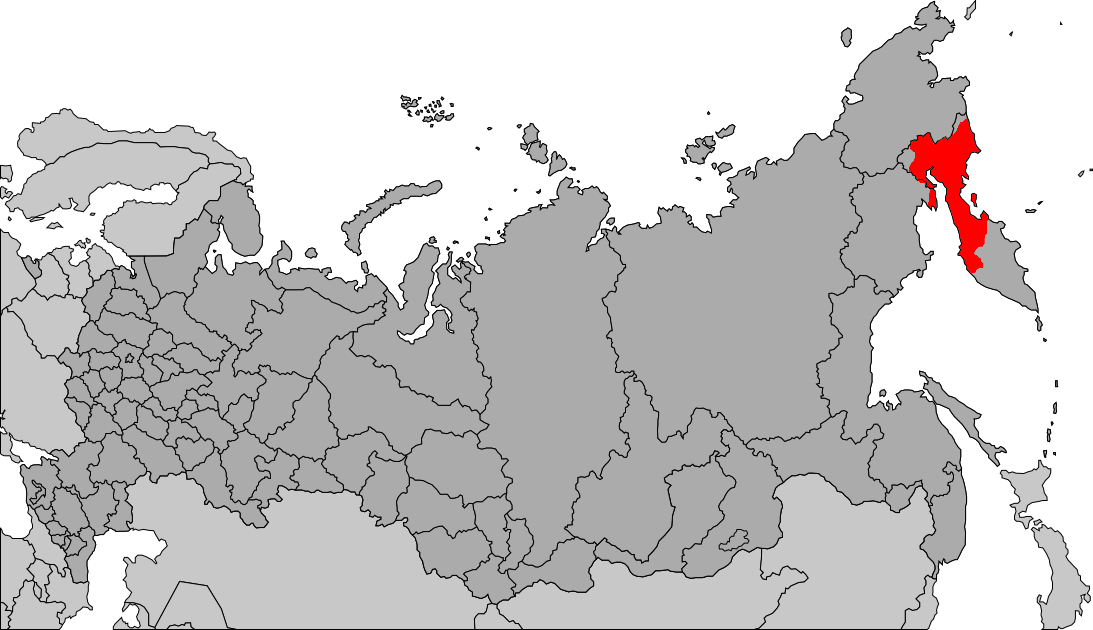|
Quikinna'qu
Quikinna'qu or Kutkinnaku is a chief deity of the Koryak mythology, part of the wider Siberian mythology. Quikinna'qu is depicted as a shapeshifting god or spirit that taught humans to hunt, fish and make fire. Name Quikinna'qu and Kutkinnaku are terms of the Koryak language, which mean ''big raven''. Quikinna'qu is also known by the names ''Acicenaqu'' which means ''big grandfather'' and ''Tenantomwan'', which means ''creator''. The name ''Tenantomwan'' is a misnomer, because Quikinna'qu isn't a creator deity A creator deity or creator god (often called the Creator) is a deity responsible for the creation of the Earth, world, and universe in human religion and mythology. In monotheism, the single God is often also the creator. A number of monolatris .... Sources {{reflist Siberian deities ... [...More Info...] [...Related Items...] OR: [Wikipedia] [Google] [Baidu] |
Koryaks
Koryaks () are an indigenous people of the Russian Far East, who live immediately north of the Kamchatka Peninsula in Kamchatka Krai and inhabit the coastlands of the Bering Sea. The cultural borders of the Koryaks include Tigilsk in the south and the Anadyr basin in the north. The Koryaks are culturally similar to the Chukchis of extreme northeast Siberia. The Koryak language and Alutor (which is often regarded as a dialect of Koryak), are linguistically close to the Chukchi language. All of these languages are members of the Chukotko-Kamchatkan language family. They are more distantly related to the Itelmens on the Kamchatka Peninsula. All of these peoples and other, unrelated minorities in and around Kamchatka are known collectively as Kamchadals. Neighbors of the Koryaks include the Evens to the west, the Alutor to the south (on the isthmus of Kamchatka Peninsula), the Kerek to the east, and the Chukchi to the northeast. The Koryak are typically split into two groups ... [...More Info...] [...Related Items...] OR: [Wikipedia] [Google] [Baidu] |
Siberian Mythology
A large minority of people in North Asia, particularly in Siberia, follow the religio-cultural practices of shamanism. Some researchers regard Siberia as the heartland of shamanism.Hoppál 2005:13 The people of Siberia comprise a variety of ethnic groups, many of whom continue to observe shamanistic practices in modern times. Many classical ethnographers recorded the sources of the idea of "shamanism" among Siberian peoples.Hoppál 2005: 15 Terminology in Siberian languages *'shaman': ''saman'' (Nedigal, Nanay, Ulcha, Orok), ''sama'' (Manchu). The variant /šaman/ (i.e., pronounced "shaman") is Evenk (whence it was borrowed into Russian). *'shaman': (Yukagir) *'shaman': (Tatar, Shor, Oyrat), (Tuva, Tofalar) *The Buryat word for shaman is ''бөө'' (''böö'') , from early Mongolian ''böge''. *'shaman': ńajt (Khanty, Mansi), from Proto-Uralic (c.f. Sámi ) *'shamaness': (Mongol), (Yakut), (Buryat), (Evenki, Lamut), (Nedigal). Related forms found in various Siberia ... [...More Info...] [...Related Items...] OR: [Wikipedia] [Google] [Baidu] |
Shapeshifting
In mythology, folklore and speculative fiction, shape-shifting is the ability to physically transform oneself through an inherently superhuman ability, divine intervention, demonic manipulation, Magic (paranormal), sorcery, Incantation, spells or having inherited the ability. The idea of shape-shifting is in the oldest forms of totemism and shamanism, as well as the oldest existent literature and Epic poetry, epic poems such as the ''Epic of Gilgamesh'' and the ''Iliad''. The concept remains a common literary device in modern fantasy, children's literature and popular culture. Folklore and mythology Popular shape-shifting creatures in folklore are werewolf, werewolves and vampires (mostly of European, Canadians, Canadian, and Native Americans in the United States, Native American/early American origin), Ichchadhari naag and naagin (shape-shifting cobra), ichchadhari naag and ichchadhari naagin (shape-shifting cobras) of India, the huli jing of East Asia (including the ... [...More Info...] [...Related Items...] OR: [Wikipedia] [Google] [Baidu] |
Koryak Language
Koryak () is a Chukotko-Kamchatkan language spoken by about 1,700 people as of 2010 in the easternmost extremity of Siberia, mainly in Koryak Okrug. It is mostly spoken by Koryaks. Its close relative, the Chukchi language, is spoken by about three times that number. The language together with Chukchi, Kerek, Alutor and Itelmen forms the Chukotko-Kamchatkan language family. Its native name in Koryak is нымылан ''nymylan'', but variants of the Russian "Koryak" name are most commonly used in English and other languages. The Chukchi and Koryaks form a cultural unit with an economy based on reindeer herding and both have autonomy within the Russian Federation. Phonology may be an allophone In phonology, an allophone (; from the Greek , , 'other' and , , 'voice, sound') is a set of multiple possible spoken soundsor ''phones''or signs used to pronounce a single phoneme in a particular language. For example, in English, (as in ''s ... of .Zhukova, 1972 Koryak alpha ... [...More Info...] [...Related Items...] OR: [Wikipedia] [Google] [Baidu] |
Creator Deity
A creator deity or creator god (often called the Creator) is a deity responsible for the creation of the Earth, world, and universe in human religion and mythology. In monotheism, the single God is often also the creator. A number of monolatristic traditions separate a secondary creator from a primary transcendent being, identified as a primary creator.(2004) Sacred Books of the Hindus Volume 22 Part 2: Pt. 2, p. 67, R.B. Vidyarnava, Rai Bahadur Srisa Chandra Vidyarnava Monotheism Atenism Initiated by Pharaoh Akhenaten and Queen Nefertiti around 1330 BCE, during the New Kingdom period in ancient Egyptian history. They built an entirely new capital city ( Akhetaten) for themselves and worshippers of their sole creator god on a wilderness. His father used to worship Aten alongside other gods of their polytheistic religion. Aten, for a long time before his father's time, was revered as a god among the many gods and goddesses in Egypt. Atenism faded away after the death of the ph ... [...More Info...] [...Related Items...] OR: [Wikipedia] [Google] [Baidu] |


